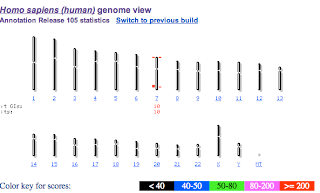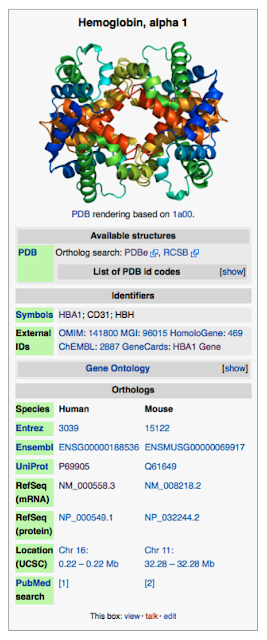Try these problems:
1. In mice, the allele for brown fur is dominant over white fur. A pure breeding brown mouse is mated to a pure breeding white mouse. What are the expected genotype and phenotype ratios?
2. A mouse from the offspring in problem 1 is mated to a white mouse. What are the expected phenotype and genotype ratios?
3. Two mice from the offspring of the cross in problem 1 are mated. What are the expected phenotype and genotype ratios?
[answers are at the end of this post.
If these three problems were difficult for you to answer, you should watch the first 5 minutes of this video from Mr. Anderson at Bozeman Science. Otherwise, you can continue on to the next problem.
In some cases, two alleles mix to create a phenotype. These cases are called incomplete dominance and codominance. In incomplete dominance, the phenotype produced is intermediate. In codominance, the phenotype produced is a mix of the two. In reality, this is probably an unimportant distinction, but you can still find it in textbooks and on standardized tests. Here's a sample problem:
4. Blood types A and B display codominance. An individual homozygous for blood type A and an individual homozygous for blood type B have kids. What are the odds that they will have a child with blood type A? B? AB?
5. Two individuals with blood type AB mate. What are the odds that their children will have blood type A? B? AB?
If you had difficulty with problems 4 and 5, begin the video above at about 4:30 and watch the portion about snapdragons.
Some genes are located on the sex chromosomes. Genes located on the X chromosome are particularly interesting since male humans only get one copy of the X chromosome (termed hemizygous) where as females get two copies.
6. The gene for red-green color vision is located on the X chromosome. R = normal vision, r = red/green colorblind. A man with normal vision marries a woman with normal vision whose father was colorblind. What are the odds of having a color blind boy? a color blind girl?
If you had difficulty with problem 6, start watching the video at 5:46.
You can get more practice with this type of problem here:
Arizona Monohybrid Crosses
It is vital that you have a good solid foundation with monohybrid crosses.
The Bozeman video goes on to describe how to do dihybrid crosses. This is great and you should watch it if you aren't familiar with them. I will teach you a way to do these that is much simpler than writing out 16 square crosses.
We will begin our investigation into inheritance with dihybrid crosses.












